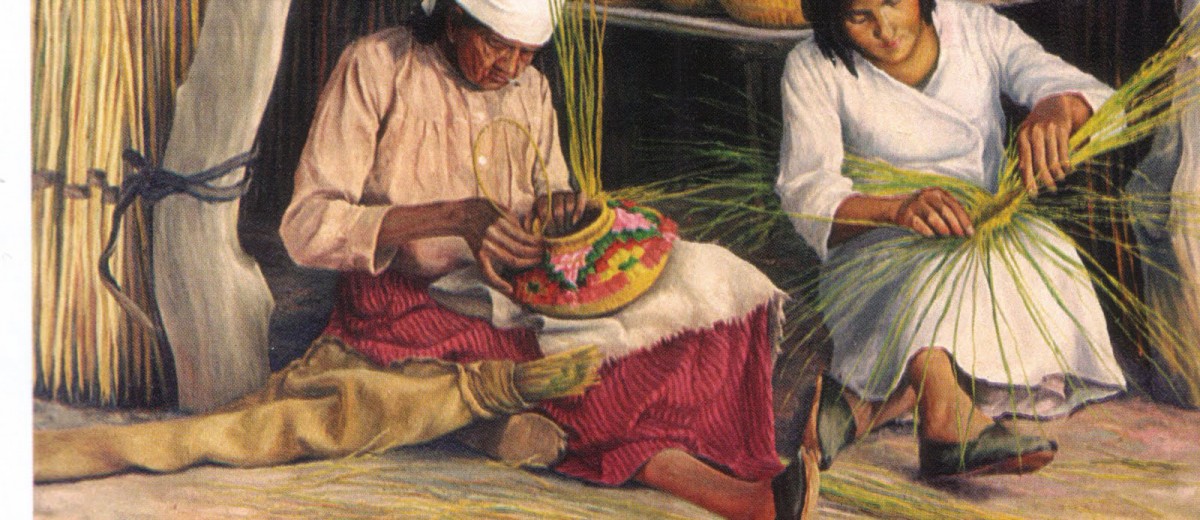Originally, the word Huarpe could be translated as “direct descendants of a deity.”
Huarpes lived in what today is known as the Cuyo region (provinces of San Juan, Mendoza, and San Luis) from the III Century. They were settled from the region of Jáchal River in San Juan to the area of Diamante River in Mendoza. It is believed that by the middle of the XVI Century they were about a 100000.
They were divided into three ethnic groups, according to their geographical distribution:
a) Milcayac Huarpes – in what is now Mendoza
b) Allentiac Huarpes – in San Juan
c) Guapees Puntanos – in San Luis
The features of the Huarpes were different from that of other indigenous American communities. They had a long head and face, they were tall and thin, the average height in women was 1.60 m and in men 1.70 m. They had dark complexion and both men and women wore long hair.
They were polytheistic: their most beloved and respected God was Hunuc Huar, who lived on the mountains. They also worshipped the sun, the stars, the moon, lightning, bolts of lightning, hills and rivers. These last ones represented spirits, to whom they pay offerings to receive their protection.
Huarpes lived in valleys close to rivers. They lived in small groups, run by a cacique (Indian chief), who was the owner of the land. They lived in different landscapes from the ones that predominate in this province today. Back then, carob tree forests were abundant, and there were also lakes in some regions. Nowadays, these regions are desserts. In this environment they settled villages with few inhabitants, which they moved from place to place depending on the season. Therefore, it can be said that they were relatively sedentary.
Their houses were made out of branches with mud, which were then tied. Roofs were made using branches, grass and mud.
Their means of transportation was on foot, but those who lived in the Guanacache lake region (department of Lavalle) used a long raft with a concave shape and a pointy prow. It was made out of totora reeds, bundled using vegetable strings or guanaco hair.
They traded fruits with other indigenous people through banter. That is why they brought mollusk shells from Chile for their necklaces and other ornaments.
They practiced fishing, hunting and agriculture. They used totora rafts bundled to each other for fishing, similar to the ones currently used on Lake Titicaca in Bolivia. These crafts were propelled by a barge pole.
They sowed corn, quinoa, and pumpkins. Carob trees supplied them with the most important meal in their diet. Using its ground seeds they made flour for “patay,” or “Indian bread,” and an alcoholic drink called “aloja.”
Basket making was one of their best assets, and it has lasted until today as a cultural legacy. They worked with vegetable fibres such as totora and reed. Besides making baskets, they also made vessels, glasses and cups for drinking weaved so tightly that could hold the liquid without it slipping.
These people’s language was characterized for having two dialects: Huarpe Millcayac, spoken in the valleys of Mendoza; and Allentiac, spoken in the province of San Juan. Huarpes combined more than 20 sounds to form words, 5 of which were vowels. We can name a few Huarpe terms, such as: “ar” meaning soul, “carigue” meaning white, “guaymallén” meaning a place with swamps.
Despite being extinct, there are still today some descendants in the adjacent areas of the old Guanacache lake. Their art still remains, their basket making, their knitting, their irrigation technique using ditches, and also some words that were adopted by our language.
Esta entrada también está disponible en: Spanish Portuguese (Brazil)








¿Qué te pareció la publicación?